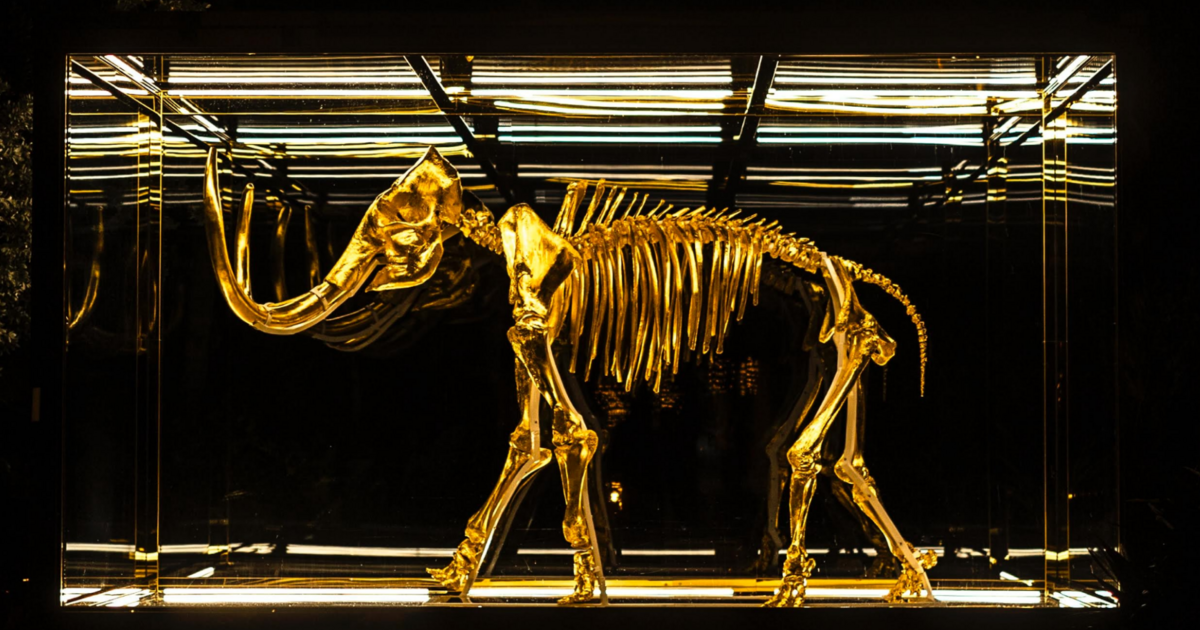grateful wolf<p>Rock art - An innovative method of XRF signal isolation in bi-layered systems for characterizing red rock art [html, pdf 14pp] <a href="https://archaeo.social/tags/RockArt" class="mention hashtag" rel="nofollow noopener noreferrer" target="_blank">#<span>RockArt</span></a> <a href="https://archaeo.social/tags/pictographs" class="mention hashtag" rel="nofollow noopener noreferrer" target="_blank">#<span>pictographs</span></a> <a href="https://archaeo.social/tags/ParietalArt" class="mention hashtag" rel="nofollow noopener noreferrer" target="_blank">#<span>ParietalArt</span></a> <a href="https://archaeo.social/tags/XRF" class="mention hashtag" rel="nofollow noopener noreferrer" target="_blank">#<span>XRF</span></a> <a href="https://www.sciencedirect.com/science/article/pii/S2352409X25003153?via%3Dihub" rel="nofollow noopener noreferrer" translate="no" target="_blank"><span class="invisible">https://www.</span><span class="ellipsis">sciencedirect.com/science/arti</span><span class="invisible">cle/pii/S2352409X25003153?via%3Dihub</span></a></p>
Recherches récentes
Aucune recherche récente
Options de recherche
Disponible uniquement lorsque vous êtes connecté.
mastouille.fr est l'un des nombreux serveurs Mastodon indépendants que vous pouvez utiliser pour participer au fédiverse.

Mastouille est une instance Mastodon durable, ouverte, et hébergée en France.
Administré par :
Statistiques du serveur :
584comptes actifs
mastouille.fr: À propos · Annuaire des profils · Politique de confidentialité
Mastodon: À propos · Télécharger l’application · Raccourcis clavier · Voir le code source · v4.3.4
#xrf
0 message · 0 participant · 0 message aujourd’hui
Niels de Winter<p><a href="https://mastodon.social/tags/Sulphur" class="mention hashtag" rel="nofollow noopener noreferrer" target="_blank">#<span>Sulphur</span></a> variations in annually <a href="https://mastodon.social/tags/layered" class="mention hashtag" rel="nofollow noopener noreferrer" target="_blank">#<span>layered</span></a> <a href="https://mastodon.social/tags/stalagmites" class="mention hashtag" rel="nofollow noopener noreferrer" target="_blank">#<span>stalagmites</span></a> using benchtop micro <a href="https://mastodon.social/tags/XRF" class="mention hashtag" rel="nofollow noopener noreferrer" target="_blank">#<span>XRF</span></a> </p><p><a href="https://mastodon.social/tags/xray" class="mention hashtag" rel="nofollow noopener noreferrer" target="_blank">#<span>xray</span></a> <a href="https://mastodon.social/tags/fluorescence" class="mention hashtag" rel="nofollow noopener noreferrer" target="_blank">#<span>fluorescence</span></a> is a great tool for <a href="https://mastodon.social/tags/geochemistry" class="mention hashtag" rel="nofollow noopener noreferrer" target="_blank">#<span>geochemistry</span></a> and <a href="https://mastodon.social/tags/paleoclimate" class="mention hashtag" rel="nofollow noopener noreferrer" target="_blank">#<span>paleoclimate</span></a> studies!</p><p><a href="https://mastodon.social/tags/science" class="mention hashtag" rel="nofollow noopener noreferrer" target="_blank">#<span>science</span></a> <a href="https://mastodon.social/tags/spectra" class="mention hashtag" rel="nofollow noopener noreferrer" target="_blank">#<span>spectra</span></a> <a href="https://mastodon.social/tags/traceelements" class="mention hashtag" rel="nofollow noopener noreferrer" target="_blank">#<span>traceelements</span></a> </p><p><a href="https://www.sciencedirect.com/science/article/abs/pii/S0584854722000106" rel="nofollow noopener noreferrer" translate="no" target="_blank"><span class="invisible">https://www.</span><span class="ellipsis">sciencedirect.com/science/arti</span><span class="invisible">cle/abs/pii/S0584854722000106</span></a></p>
Sebastian Breitenbach<p>Just out: our latest work reveals environmental changes in southern Patagonia. A fine multi-proxy study led by @NehmeCarole gives you everything: <a href="https://mastodon.world/tags/stableisotopes" class="mention hashtag" rel="nofollow noopener noreferrer" target="_blank">#<span>stableisotopes</span></a> <a href="https://mastodon.world/tags/clumped" class="mention hashtag" rel="nofollow noopener noreferrer" target="_blank">#<span>clumped</span></a> <a href="https://mastodon.world/tags/isotopes" class="mention hashtag" rel="nofollow noopener noreferrer" target="_blank">#<span>isotopes</span></a> <a href="https://mastodon.world/tags/fluidinclusions" class="mention hashtag" rel="nofollow noopener noreferrer" target="_blank">#<span>fluidinclusions</span></a> <a href="https://mastodon.world/tags/XRF" class="mention hashtag" rel="nofollow noopener noreferrer" target="_blank">#<span>XRF</span></a> and more. Proud to be part of such nice team! 😍 <a href="https://www.sciencedirect.com/science/article/pii/S0921818123000231?dgcid=author" rel="nofollow noopener noreferrer" target="_blank"><span class="invisible">https://www.</span><span class="ellipsis">sciencedirect.com/science/arti</span><span class="invisible">cle/pii/S0921818123000231?dgcid=author</span></a></p>
Markus Osterhoff<p>Ein Forschungsteam [<a href="https://academiccloud.social/tags/Forschung" class="mention hashtag" rel="nofollow noopener noreferrer" target="_blank">#<span>Forschung</span></a> <a href="https://academiccloud.social/tags/Physik" class="mention hashtag" rel="nofollow noopener noreferrer" target="_blank">#<span>Physik</span></a> <a href="https://academiccloud.social/tags/Optik" class="mention hashtag" rel="nofollow noopener noreferrer" target="_blank">#<span>Optik</span></a>] der <a href="https://academiccloud.social/tags/Universit%C3%A4t" class="mention hashtag" rel="nofollow noopener noreferrer" target="_blank">#<span>Universität</span></a> <a href="https://academiccloud.social/tags/G%C3%B6ttingen" class="mention hashtag" rel="nofollow noopener noreferrer" target="_blank">#<span>Göttingen</span></a> hat ein neues Verfahren für Röntgenfarbaufnahmen [<a href="https://academiccloud.social/tags/R%C3%B6ntgen" class="mention hashtag" rel="nofollow noopener noreferrer" target="_blank">#<span>Röntgen</span></a> <a href="https://academiccloud.social/tags/Xray" class="mention hashtag" rel="nofollow noopener noreferrer" target="_blank">#<span>Xray</span></a> <a href="https://academiccloud.social/tags/Xrays" class="mention hashtag" rel="nofollow noopener noreferrer" target="_blank">#<span>Xrays</span></a>] entwickelt. Um nicht nur die chemischen <a href="https://academiccloud.social/tags/Elemente" class="mention hashtag" rel="nofollow noopener noreferrer" target="_blank">#<span>Elemente</span></a> einer Probe durch Röntgenfluoreszenzanalyse [<a href="https://academiccloud.social/tags/Fluoreszenz" class="mention hashtag" rel="nofollow noopener noreferrer" target="_blank">#<span>Fluoreszenz</span></a> <a href="https://academiccloud.social/tags/XRF" class="mention hashtag" rel="nofollow noopener noreferrer" target="_blank">#<span>XRF</span></a>] zu bestimmen, sondern auch deren räumliche Verteilung, muss bislang die genutzte <a href="https://academiccloud.social/tags/R%C3%B6ntgenstrahlung" class="mention hashtag" rel="nofollow noopener noreferrer" target="_blank">#<span>Röntgenstrahlung</span></a> fokussiert und die Probe aufwendig abgerastert werden.</p><p>PM: <a href="https://uni-goettingen.de/de/3240.html?id=6960" rel="nofollow noopener noreferrer" target="_blank"><span class="invisible">https://</span><span class="ellipsis">uni-goettingen.de/de/3240.html</span><span class="invisible">?id=6960</span></a></p><p>Publikation @ Optica: <a href="https://doi.org/10.1364/OPTICA.477809" rel="nofollow noopener noreferrer" target="_blank"><span class="invisible">https://</span><span class="">doi.org/10.1364/OPTICA.477809</span><span class="invisible"></span></a></p>
ExplorerFlux en direct
Mastodon est le meilleur moyen de suivre ce qui se passe.
Suivez n'importe qui à travers le fédivers et affichez tout dans un ordre chronologique. Ni algorithmes, ni publicités, ni appâts à clics en perspective.
Créer un compteSe connecterGlissez et déposez pour envoyer
